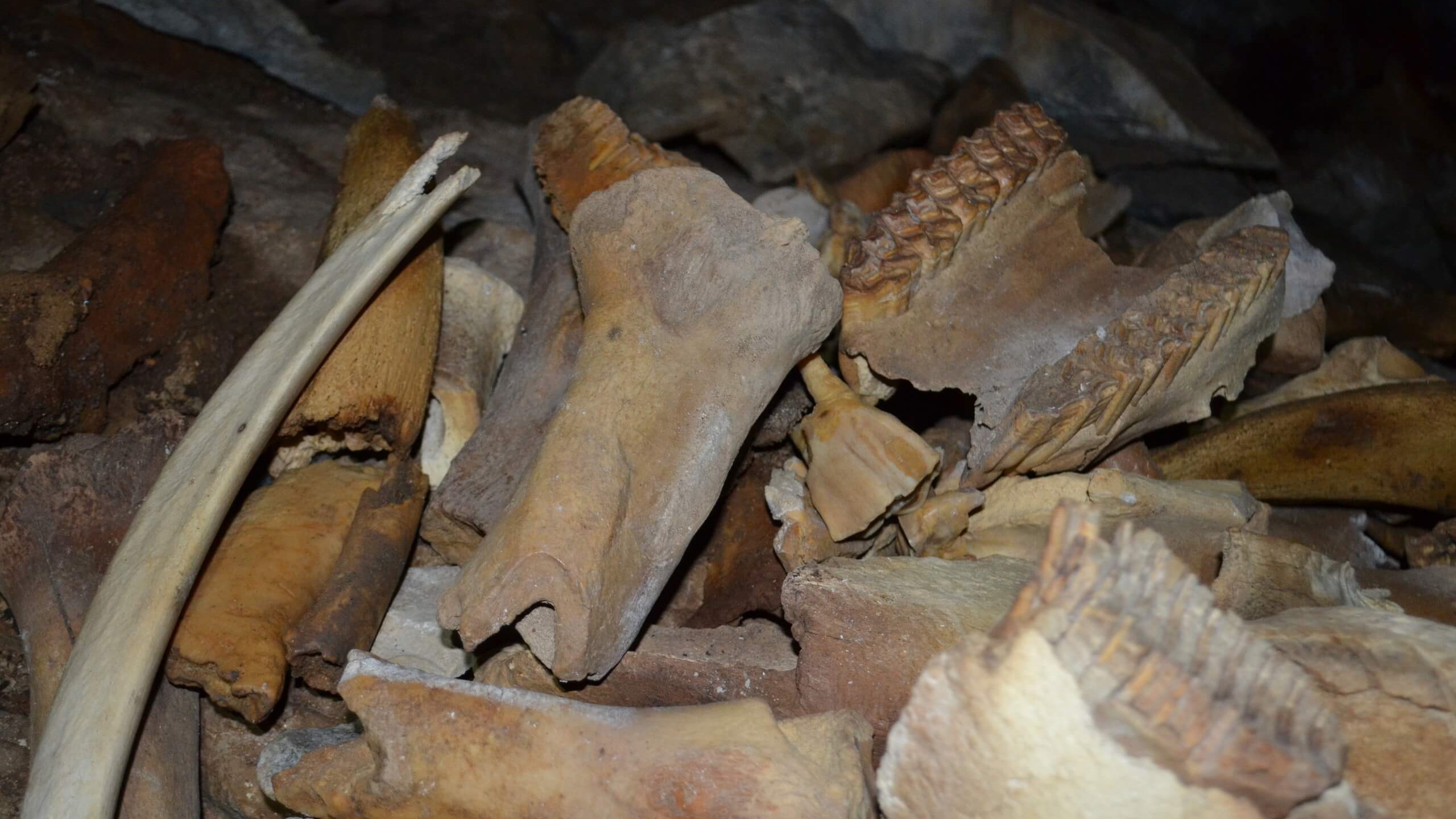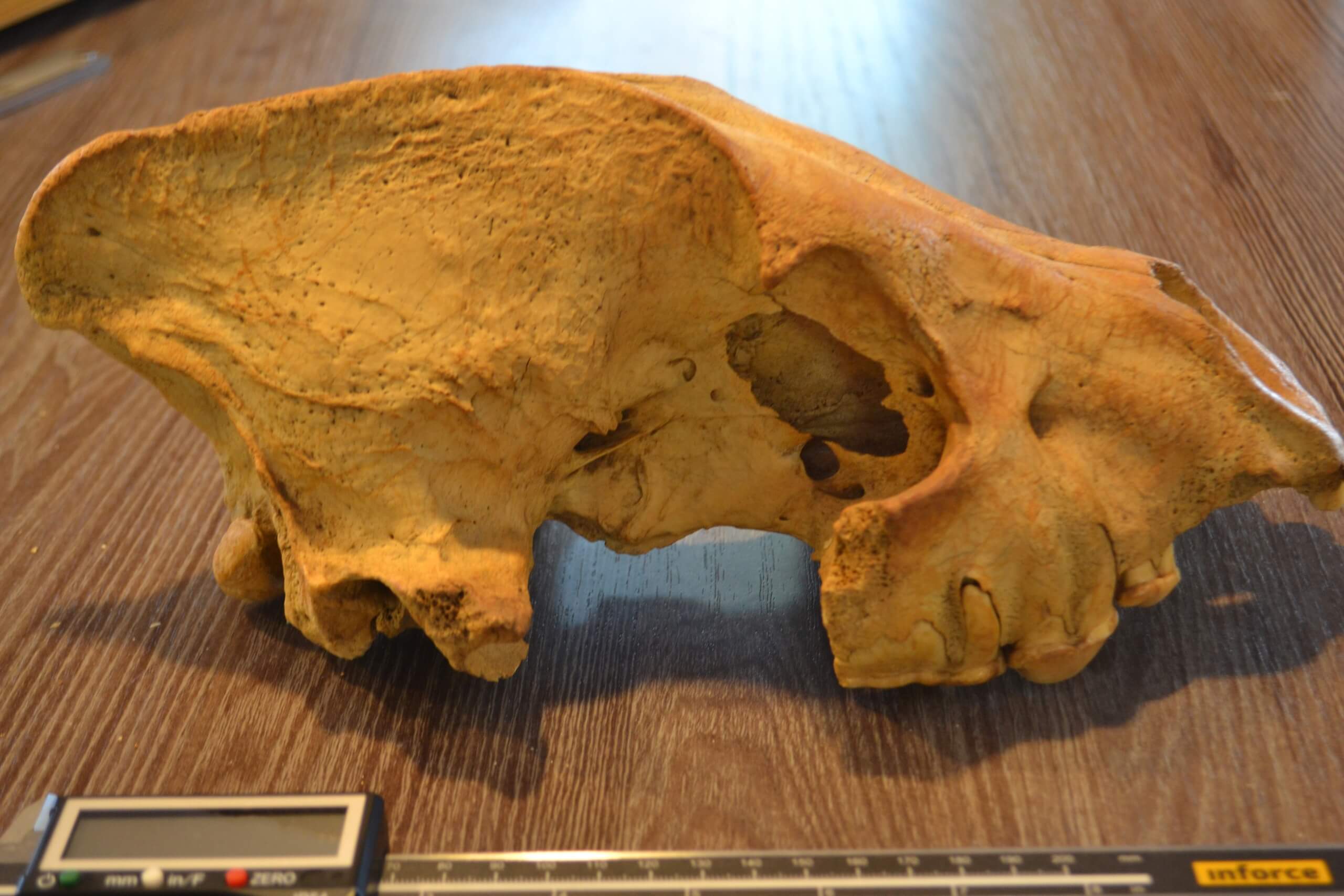Siberian cave filled with mammoth, rhino and bear bones is ancient hyena lair
The cave has been untouched for around 42,000 years. It also contained the bones and teeth of hyena pups, suggesting they raised their young there.
Siberian locals have discovered an incredible prehistoric time capsule in what paleontologists believe is the largest ancient hyena lair ever found in Asia. The cave contained a whole menagerie of animal bones that had been undisturbed for about 42,000 years.
Paleontologists found the bones of both predator and prey animals from the Pleistocene epoch (2.6 million to 11,700 years ago), including brown bears, foxes, wolves, mammoths, rhinos, yaks, deer, gazelles, bison, horses, rodents, birds, fish and frogs.
The researchers posted a video of the discovery (in Russian) on June 20.
Residents of Khakassia, a republic in southern Siberia, discovered the cave five years ago, according to a translated statement from the V. S. Sobolev Institute of Geology and Mineralogy. However, due to the remoteness of the area, paleontologists weren’t able to fully explore and examine the remains until June 2022.
Related: 'Prehistoric' mummified bear discovered in Siberian permafrost isn't what we thought
They collected around 880 pounds (400 kilograms) of bones, including two complete cave hyena skulls. The paleontologists suspect the hyenas lived in the cave because the bones had gnaw marks consistent with hyena teeth.
“In addition, we came across a series of bones in anatomical order. For example, in rhinos, the ulna and radius bones are together," Dmitry Gimranov, senior researcher at the Ural Branch of the Russian Academy of Sciences, said in the statement. "This suggests that the hyenas dragged parts of the carcasses into the lair."
Get the world’s most fascinating discoveries delivered straight to your inbox.
The researchers also found the bones of hyena pups — which tend not to be preserved as they are so fragile — indicating they were raised in the cave. "We even found a whole skull of a young [hyena], many lower jaws and milk teeth," Gimranov said.
Siberia is rich with the remains of Pleistocene animals. Their remains are not old enough to be fossilized, or replaced with rock through a mineralization process. The bones, and sometimes skin, flesh and even blood of these animals are often not much different than they were the year they died. This is thanks — in large part — to the cold weather preserving the remains.
The bones have been sent to Yekaterinburg for further analysis.“[T]he finds will also tell us about the flora and fauna of that time, what animals ate, what the climate was like in this area,” Dmitry Malikov, senior researcher at the Institute of Geology and Mineralogy of the Siberian Branch of the Russian Academy of Sciences, said in the statement.
“We will also get important information from the coprolites,” the fossilized feces of the animals, he added.

Kristin Hugo is a science journalist with a focus on biology, nature, animals, and bones. After earning a BA in Journalism from CSU Northridge and an MS in Science Journalism from Boston University, Kristin worked as a science writer for National Geographic, PBS Newshour, Newsweek, Bay Nature Magazine, and more. Kristin also has experience in fact-checking, social media, video production, photography, and illustration.
Kristin's current main project is writing a book for MIT Press about dead animals, called "Carcass: On the Afterlives of Animal Bodies."





